京表具 京表具協同組合連合会
KYO-HYOGUMOUNTING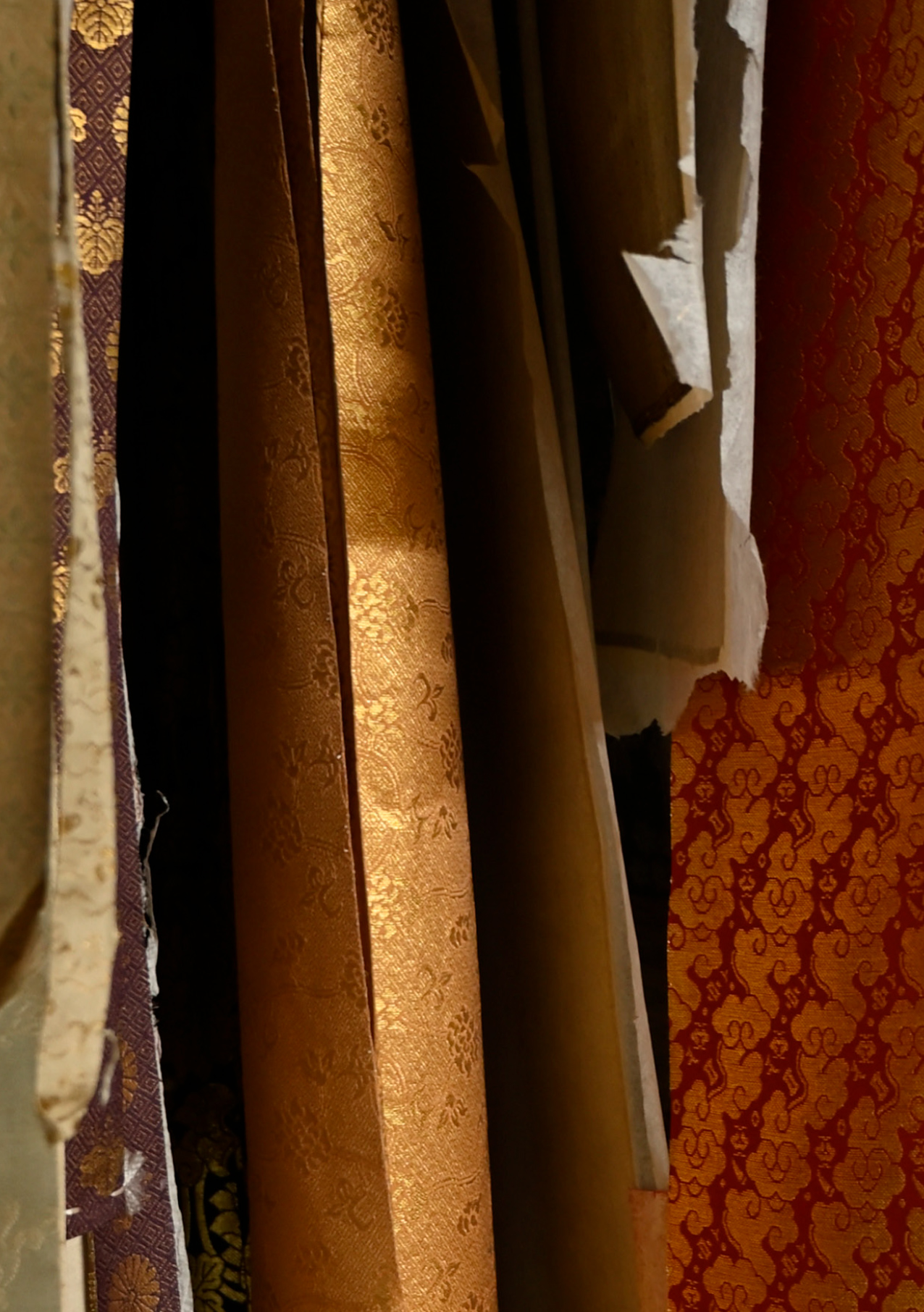 1
1
- さまざまな時代の裂。
表具は、6世紀頃に仏教とともに中国から伝わり、平安時代(8世紀後半)に芸術と宗教の中心地である京都で発展しました。元は中国からの教本、経巻などの修復が主な仕事でしたが、お茶文化や京都画壇の隆興を背景に新調する仕事へと発展し、より高度な技術が成熟しました。とくに掛け軸は、主役である画や書を、どんな裂や和紙を組み合わせて引き立たせるかというセンスも腕のうち。加えて表具師の仕事には、日本画や書などの古美術の修復も含まれます。こうした美術工芸品の分野と、生活に密着した襖や障子、壁装などの両方を指して表具といいます。鎌倉時代(12世紀)から使う素材や工法がほとんど変わっていないこれらの仕事には、和紙と糊、裂地への幅広く深い知識と、長い経験をもとにした美意識が要求されるという共通点があります。リトグラフや抽象的な作品をシンプルな掛け軸に仕立てたり、インテリアを彩るモダンなパネルを制作したりするなど、現代の暮らしに合った新しい試みも多くなされています。
Hyōgu, the ancient craft of mounting calligraphy, painting or other works of art, was introduced from China along with Buddhism around the 6th century. This craft was further refined in Kyoto, the center of art and religion during the Heian period (late 8th century). Originally, it was mainly used to restore textbooks and sutras from China. As tea culture and artistic circles flourished in Kyoto, hyogu became more creative and technically advanced. To create a hanging scroll requires a perfect sense of what type of textile or Japanese paper will best complement the drawing or calligraphy. The craftsman will also be involved in the careful preservation and restoration of precious artworks from the past. Hyōgu is used not only in relation to fine art, but also for more everyday objects such as sliding doors, shoji and wall coverings. The materials and methods used since the Kamakura period (12th century) have changed very little, and they require a wide and in-depth knowledge of paper glue, textiles and aesthetic balance based on long experience. The tradition has also been adapted to suit modern life, such as hanging lithographs and abstract art onto simple hanging scrolls or creating panels to decorate interior spaces.
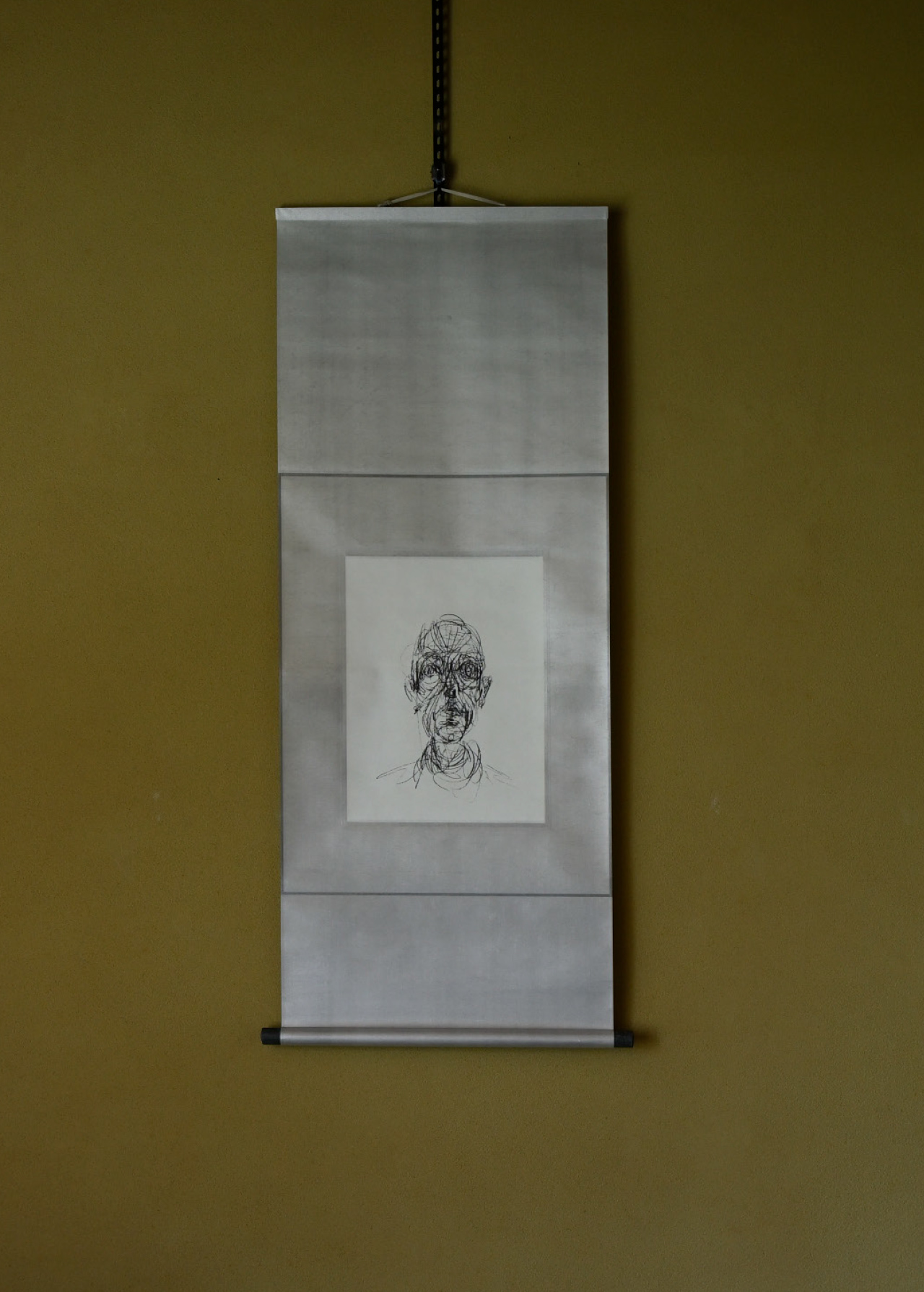 2
2
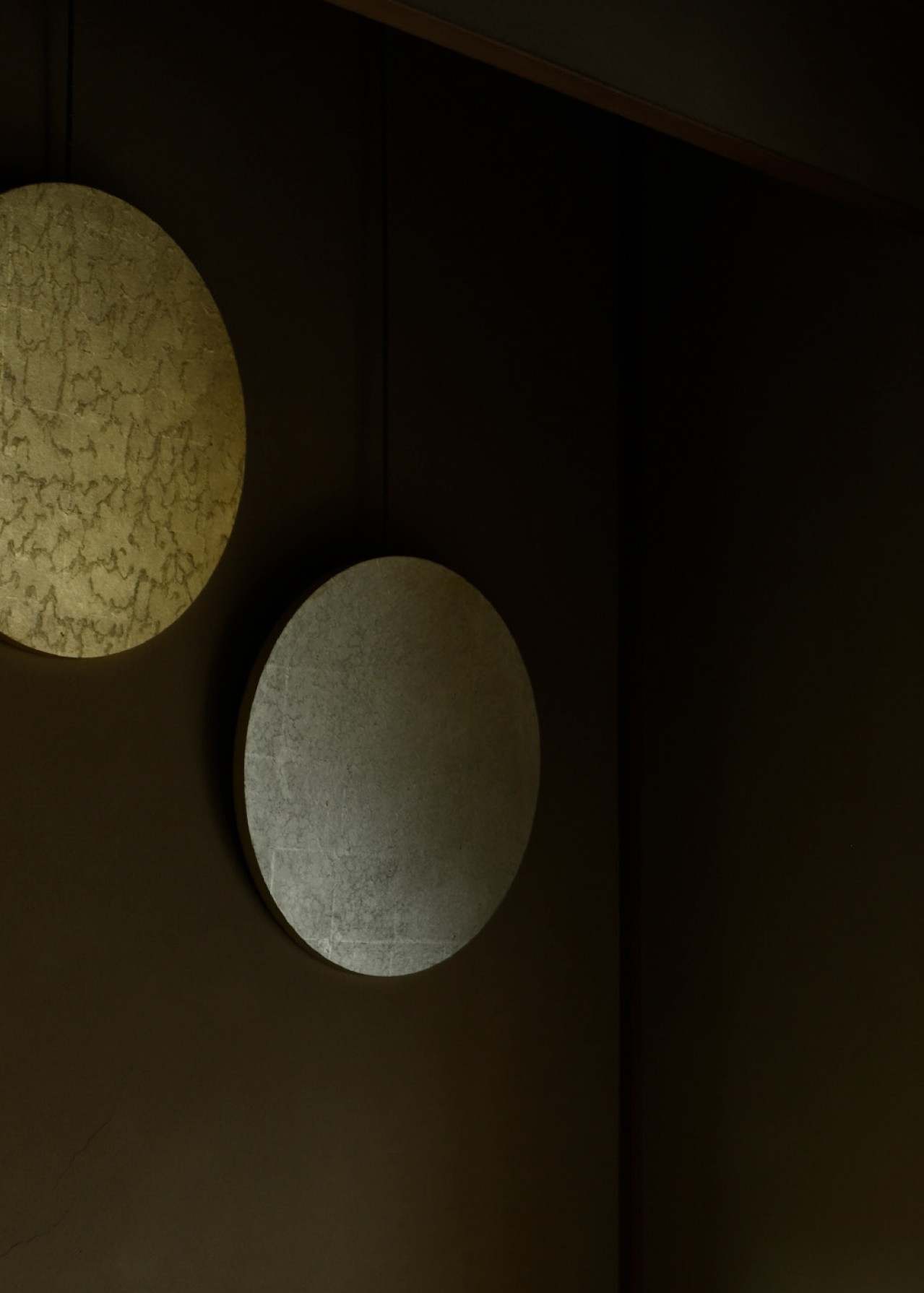 3
3
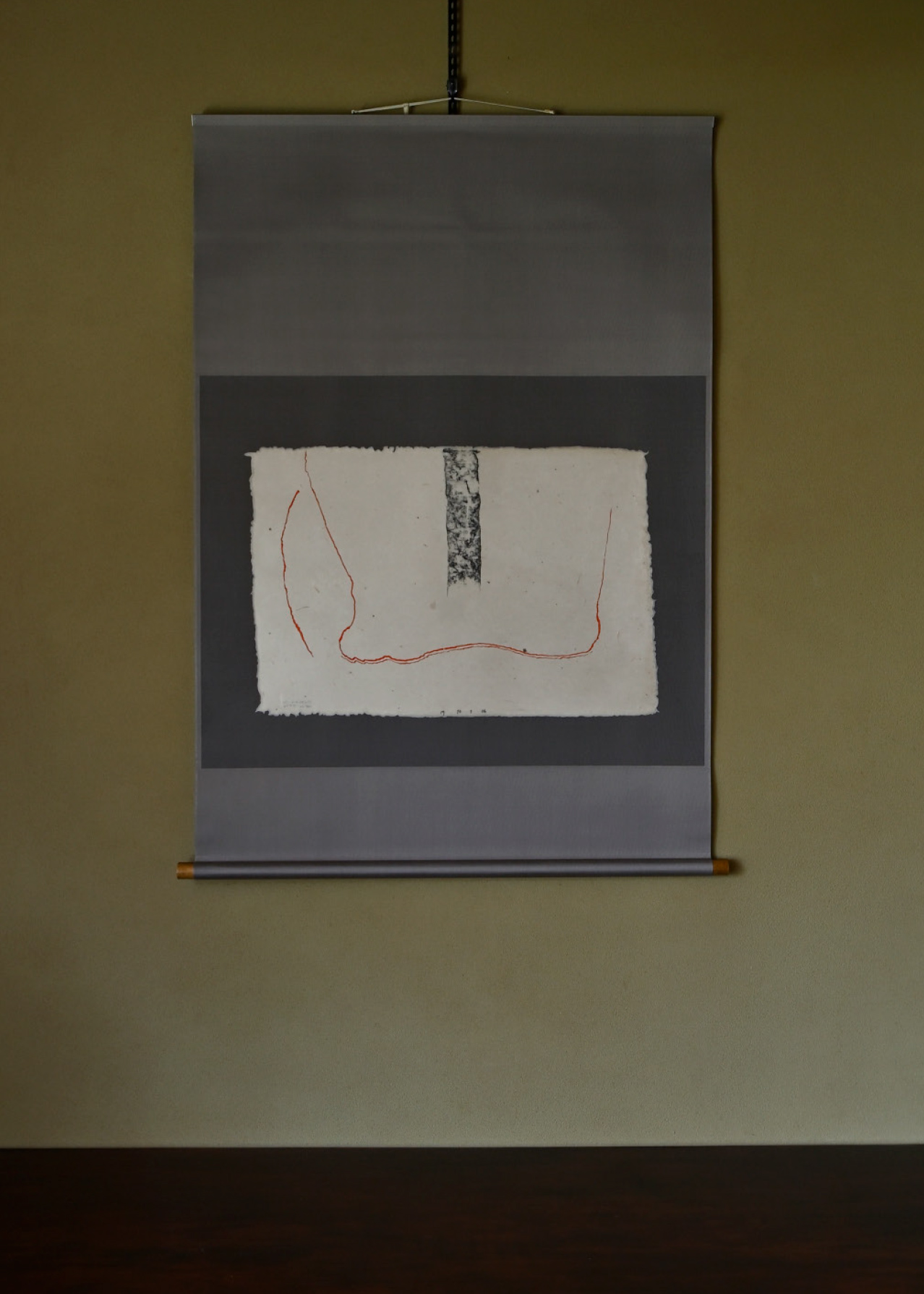 4
4
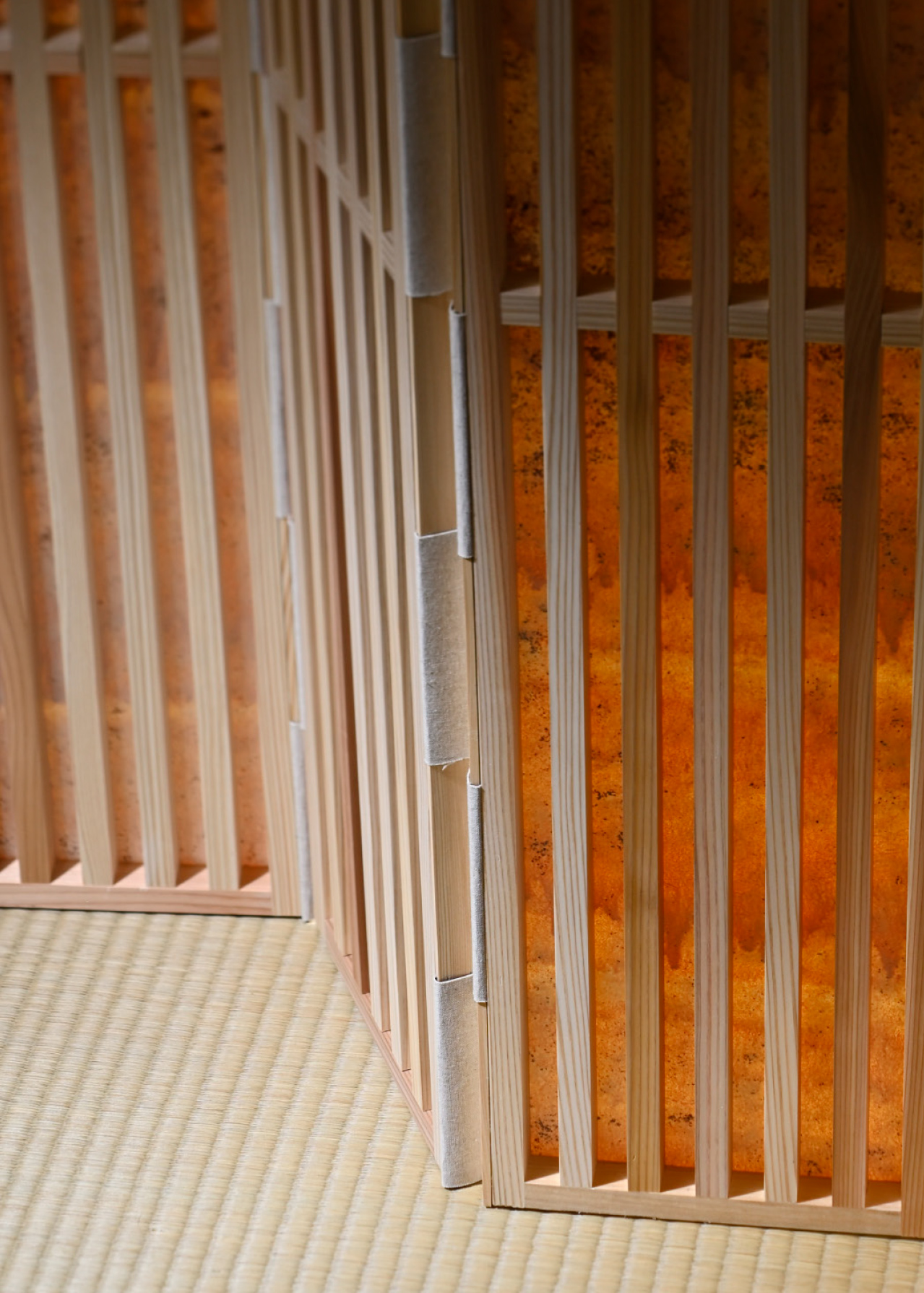 5
5
- : 雲母をひいたもみ紙を用いてジャコメッティのリトグラフを掛け軸に仕立てた。下部の両端にある軸先には黒鞍馬石と呼ばれる石を、割目をそのままに生かして用いている。
- : 金箔を使用したアートパネル「丸 maru」。
- : フランス人アーティスト、ブルーノ・マトンのドローイングを掛け軸に。西陣織の絹地の裏と表を使って仕立てた。
- : 杉組子に下貼りをせずに漆和紙を張り込んだ、和紙そのものの透け感を演出した屏風。
(1,3,5 株式会社弘誠堂 / 2,4 株式会社陽光堂 伊藤清人)
1: Textiles from different eras. 2: A modern hanging scroll created from a Giacometti lithograph using fir paper with mica. Black kurama stones are used for the shaft ends of the lower part, making the best use of the cracks. 3: Maru, an art panel using gold leaf. 4: Based on a drawing by French artist Bruno Mutton. It was made with the back and front of Nishijin silk fabric. 5: A folding screenrevealing the sheerness of the Japanese paper itself, by directly pasting lacquer paper onto a cedar muntin. (1,3,5 Kōseidō / 2,4 Yōkōdō Kiyoto Ito)

